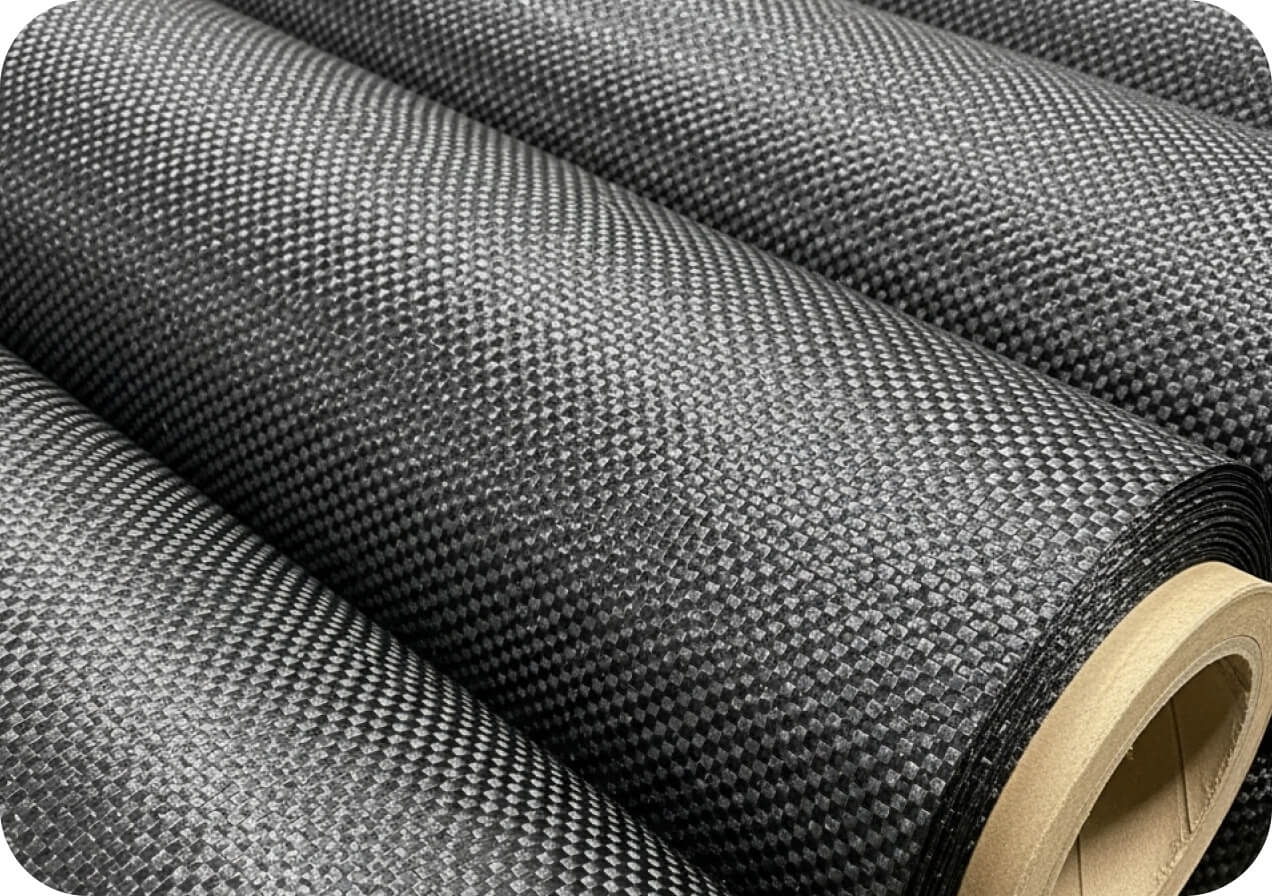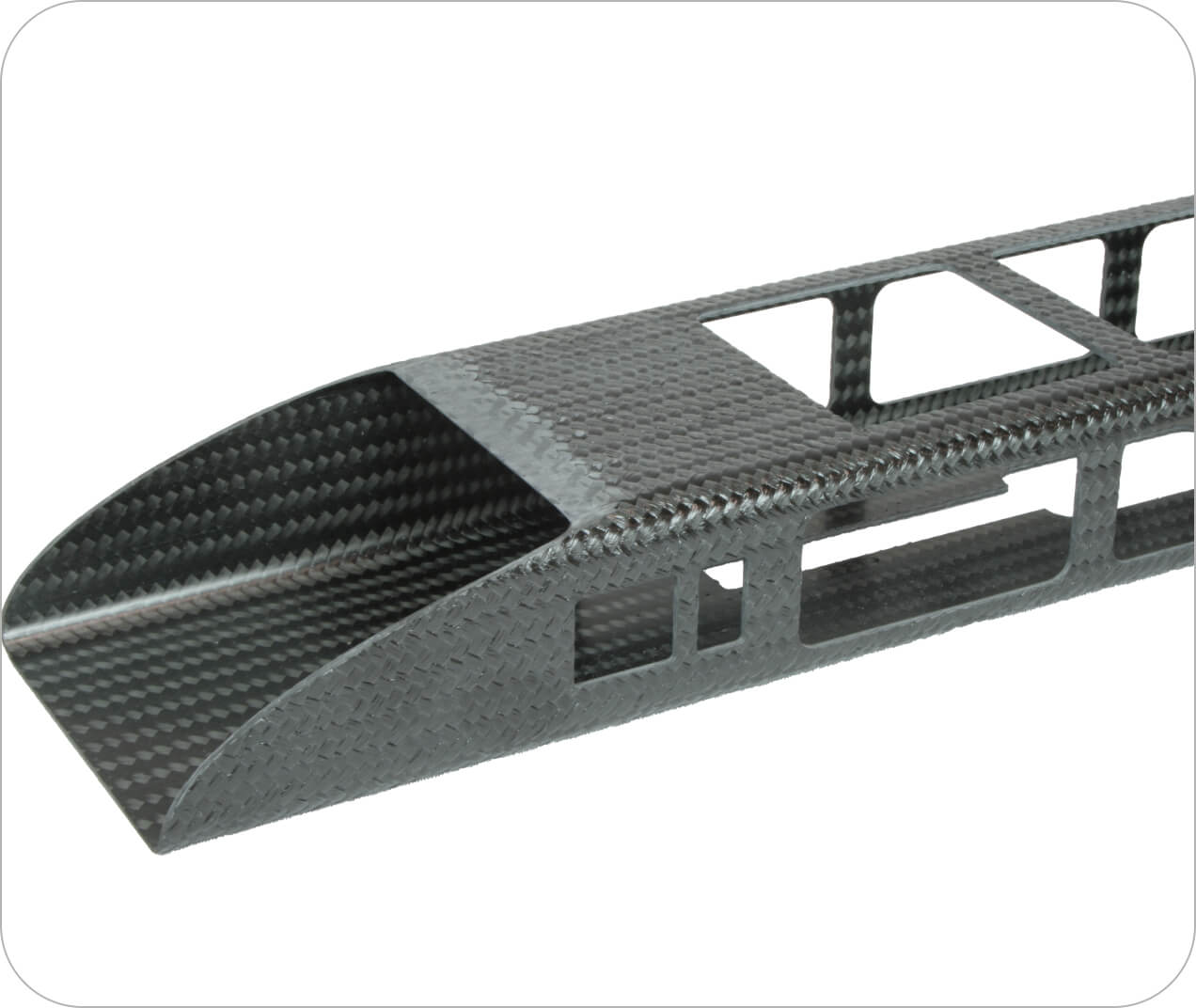Engineering with Carbon Fiber Composites
Occasionally potential customers call us and ask, “can you copy this steel part in carbon fiber?” The answer is typically, “that is probably not a good idea.” In most cases, it doesn’t really make sense to make a part designed for metal and just replace metal with carbon.
You need to design it for carbon fiber for multiple reasons. The material properties of steel and carbon fiber are vastly different. They are manufactured by vastly different processes. You need to design a part for carbon fiber to take advantage of its unique properties.


Carbon Fiber Design
The carbon fiber design process begins with a thorough understanding of each customer’s requirements, and the generation of a formal product specification. Product and process development are done simultaneously based on these technical requirements, as well as volume and cost considerations.
In most cases, the carbon fiber design process involves a great deal of iteration between CAD design, analytical and computational analyses, and cost estimation. Different custom carbon fiber design projects require varying emphasis in these areas, depending on the client and application.
Team of Carbon Fiber Engineers
Our team of engineers, designers, and technicians have decades of experience in product development, research, and invention.
Combining creativity with precision engineering, Element 6 Composites takes pride in helping customers develop practical and elegant solutions, whether for a single prototype or for a production run of thousands of parts.

The Ultimate Guide to Carbon Fiber Design and Application

Carbon Fiber Analysis
Our current computational tools include NeiNastran for Finite Element Stress analysis of composites. Our FEA experience ranges from advanced carbon fiber truss structures to prosthetics to wind turbines and unmanned aerial vehicles in a wide variety of applications.
In addition to our internal expertise, we have relationships with experts available to support us with unusual or particularly challenging analyses. One example involved an NYSTAR grant we received, which allowed us the opportunity to work with Cornell University to test our carbon fiber materials. This provided excellent data for model refinements and internal design databases.
Carbon Fiber Prototyping
An integral part of the design process is prototyping. At Element 6 Composites, our carbon fiber prototype group is staffed by experienced engineers and seasoned craftsmen. Carbon fiber prototyping can range from simple test pieces to fully functional near production-ready assemblies.
Often individual components and sub-assemblies go through extensive testing to validate design calculations and assure the customer that the final product will meet all specifications.
In addition to their use in evaluating functionality, our high-quality carbon fiber prototypes are often by customers as marketing tools. Our prototype team aims for production-level quality, in both form and function, even at the early stages of product development.


Carbon Fiber Manufacturing
The processes we utilize require an advanced level of manufacturing skill. Our highly trained and experienced craftsmen are knowledgeable in a wide range of carbon fiber materials, manufacturing processes, and techniques, to ensure unmatched quality. Our goal is always zero defects, and team members are highly motivated to meet this goal.
The Element 6 Composites staff are experts in multiple custom carbon fiber processes, including wet layup, vacuum bagging, matched tooling, vacuum-assisted resin transfer (VARTM), pultrusion, and other non-traditional proprietary methods.
35+ Years In Business
As a leading New York carbon fiber products manufacturer for a wide variety of applications, we also have years of experience with CNC machining carbon fiber, aramid, and other fiber-reinforced composites. Due to the conductivity, stiffness, and brittle behavior of carbon-fiber composites, machining these parts requires special tools and often non-traditional techniques.
One advantage of composites is the ability to produce parts optimized for strength, stiffness, and design simplicity. From simple to complex, we use advanced carbon fiber fabrication techniques to create superior results. To accomplish this we apply our three core strengths: Innovation, Technology, and Creativity.





